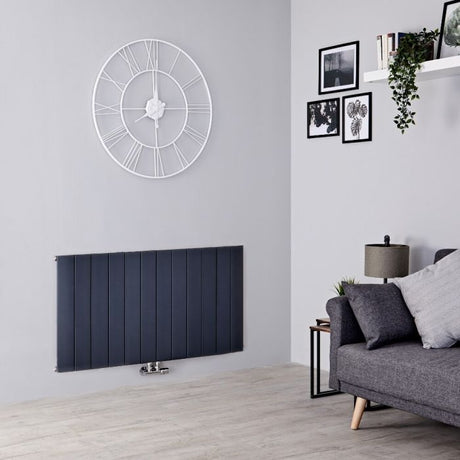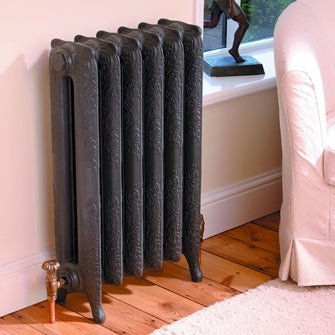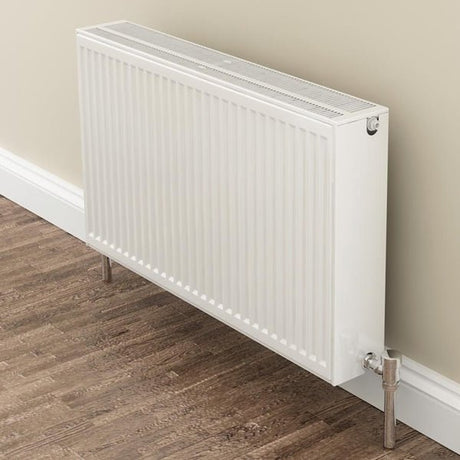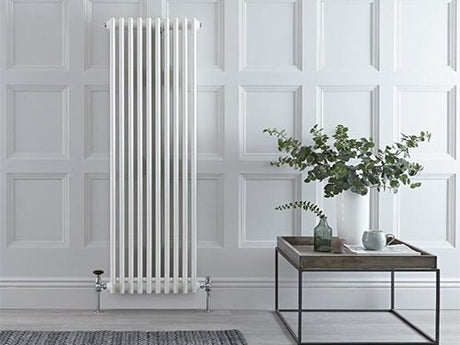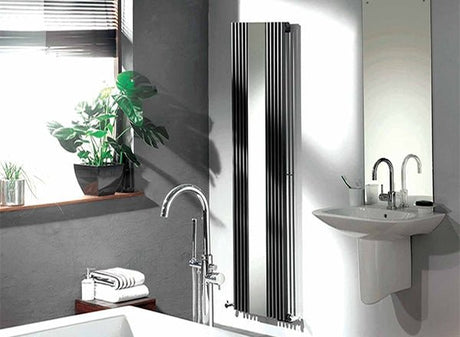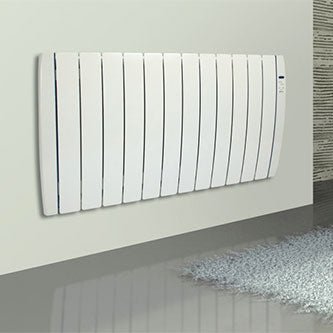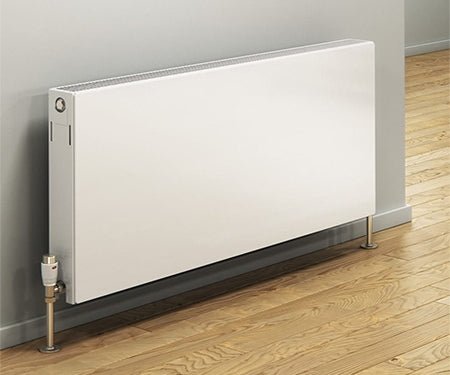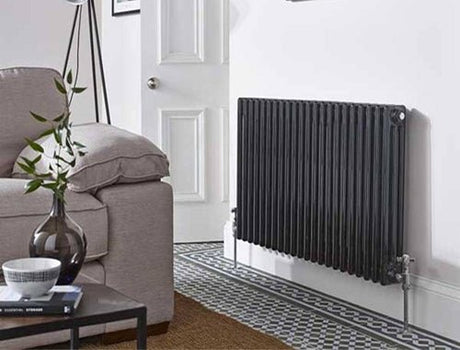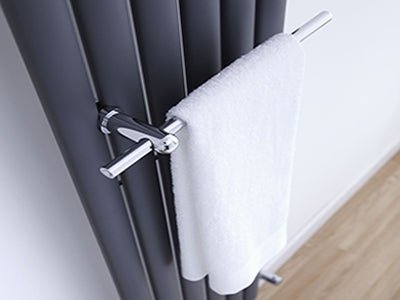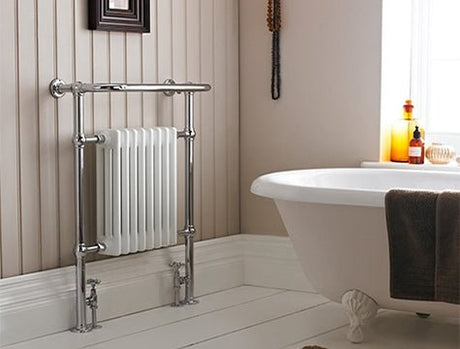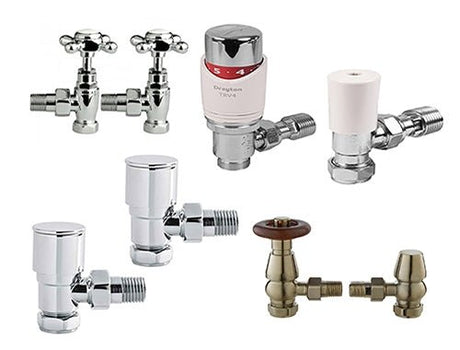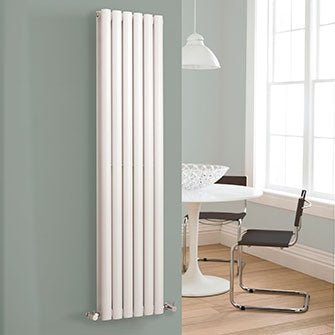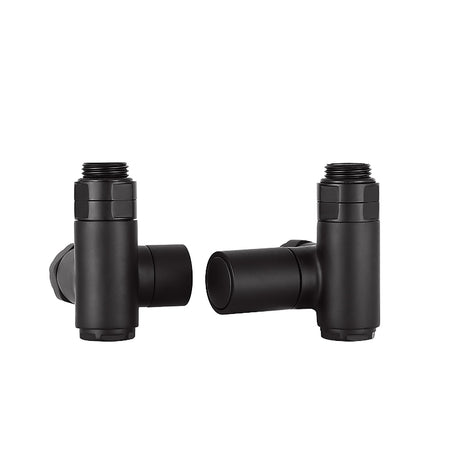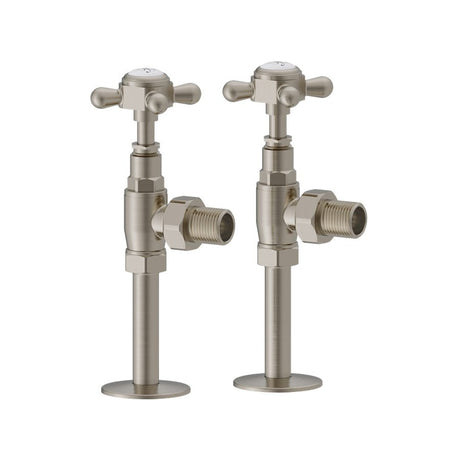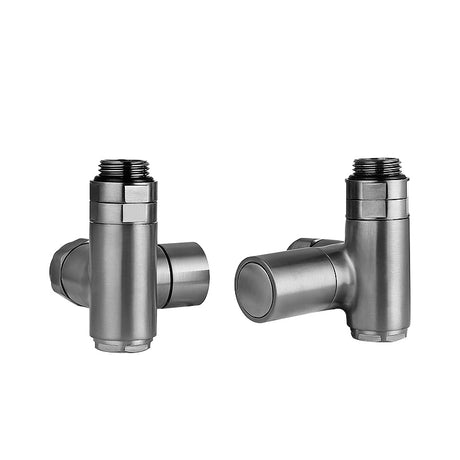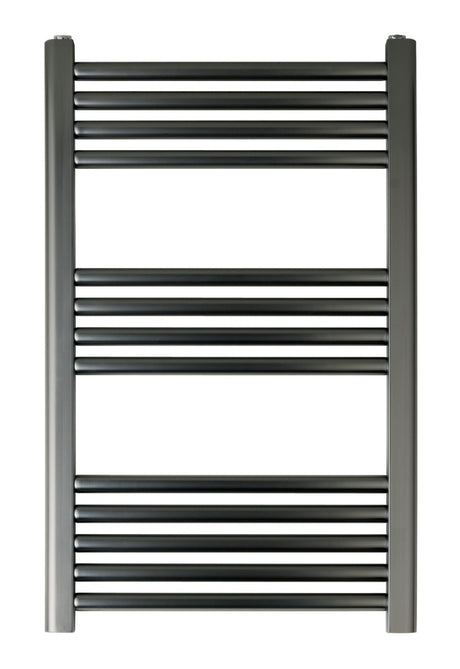Just Taps Plus
JTP Dual Fuel Radiator Valve - Brushed Brass - DFRVBBR
Available (subject to supplier stock)Regular price £56.95Unit price /UnavailableJust Taps Plus
JTP Dual Fuel Radiator Valve - Matt Black - DFRVMB
Available (subject to supplier stock)Regular price £56.95Unit price /UnavailableHudson Reed
Very low stock (1 unit)Regular price £149.63Unit price /UnavailableJust Taps Plus
JTP Grosvenor Angled Radiator Valve (Pair) - Antique Brass - GRRVAG
Available (subject to supplier stock)Regular price £50.26Unit price /UnavailableHudson Reed
Hudson Reed Crosstop Manual Angled Radiator Valves Pair - Chrome - HT300
Available (subject to supplier stock)Regular price £24.65Unit price /UnavailableJust Taps Plus
JTP VOS Corner Radiator Valve - Brushed Brass - 23RVACABBR
Available (subject to supplier stock)Regular price £46.24Unit price /UnavailableJust Taps Plus
JTP VOS Radiator 1200mm High X 500mm Wide - Brushed Brass - VOS1200BBR
Available (subject to supplier stock)Sale price £228.44 Regular price £247.90Unit price /UnavailableHudson Reed
Available (subject to supplier stock)Regular price £153.40Unit price /UnavailableHudson Reed
Available (subject to supplier stock)Regular price £125.32Unit price /UnavailableJust Taps Plus
JTP Angled Radiator Valve - Brushed Brass - 23RVABBR
Available (subject to supplier stock)Regular price £32.83Unit price /UnavailableHudson Reed
Low stock (5 units)Regular price £125.32Unit price /UnavailableJust Taps Plus
JTP VOS Radiator 800mm High X 500mm Wide - Brushed Brass - VOS800BBR
Available (subject to supplier stock)Sale price £172.87 Regular price £187.60Unit price /UnavailableHudson Reed
Available (subject to supplier stock)Regular price £146.89Unit price /UnavailableJust Taps Plus
JTP VOS Radiator 1600mm High X 500mm Wide - Brushed Brass - VOS1600BBR
Available (subject to supplier stock)Sale price £284.00 Regular price £308.20Unit price /UnavailableJust Taps Plus
JTP Straight Radiator Valve - Brushed Brass - 23RVSBBR
Available (subject to supplier stock)Regular price £32.83Unit price /UnavailableHudson Reed
Regular price £222.56Unit price /UnavailableBurlington
Burlington Angled Radiator Valves Pair - Brushed Nickel - R6 BNKL
Available (subject to supplier stock)Sale price £56.50 Regular price £63.73Unit price /UnavailableJust Taps Plus
JTP VOS Radiator 1200mm High X 600mm Wide - Brushed Brass - VOS1206BBR
Available (subject to supplier stock)Sale price £243.88 Regular price £264.65Unit price /UnavailableHudson Reed
Very low stock (1 unit)Regular price £259.54Unit price /UnavailableHudson Reed
Available (subject to supplier stock)Regular price £204.07Unit price /UnavailableHudson Reed
Available (subject to supplier stock)Regular price £222.56Unit price /UnavailableReina
Regular price £260.40Unit price /UnavailableJust Taps Plus
JTP Dual Fuel Radiator Valve - Chrome - DFRVCH
Available (subject to supplier stock)Regular price £51.59Unit price /UnavailableJust Taps Plus
JTP VOS Radiator 800mm High X 600mm Wide - Brushed Brass - VOS806BBR
Available (subject to supplier stock)Sale price £179.05 Regular price £194.30Unit price /UnavailableUltraheat
Ultraheat Klon Double Designer Vertical Radiator, 2000mm High x 535mm Wide - White - KD2014W
Available (subject to supplier stock)Regular price £328.10Unit price /UnavailableReina
Reina Reflect Modern Mirrored Designer Vertical Radiator 1800mm High x 445mm Wide - White- RND-RC8W
Very low stock (1 unit)Regular price £250.18Unit price /UnavailableJust Taps Plus
JTP Dual Fuel Radiator Valve - Brushed Black - DFRVBBL
Available (subject to supplier stock)Regular price £56.95Unit price /UnavailableJust Taps Plus
JTP VOS Radiator 800mm High X 500mm Wide - Brushed Black - VOS800BBL
Available (subject to supplier stock)Sale price £142.01 Regular price £154.10Unit price /UnavailableHudson Reed
Low stock (8 units)Regular price £290.35Unit price /UnavailableHudson Reed
Hudson Reed Revive Modern Double Designer Vertical Radiator 1800mm High x 354mm Wide - White - HL326
Available (subject to supplier stock)Regular price £153.40Unit price /UnavailableUltraheat
Ultraheat Tilbrook Single Designer Vertical Radiator, 1500mm High x 106mm Wide - White - TS1504W
Available (subject to supplier stock)Regular price £73.60Unit price /UnavailableReina
Reina Rione Modern Designer Single Horizontal Radiator 550mm High x 800mm Wide - White - RND-RNE800
Very low stock (1 unit)Regular price £162.19Unit price /Unavailable
The Different Types of Radiator
Firstly, let’s outline the types of radiator available. Each type has its advantages and disadvantages, so this is worth considering when deciding how to control the temperature of your home.
Single Panel Radiators
Single panel radiators, which are also known as type 11 radiators, are a simple heating solution that are designed to be slimmer and fit closer to the wall. However, they only have one heated panel to heat the room.
Double Panel Radiators
Double panel radiators, also known as type 22 radiators, have two heating panels. Having two panels means they offer a much greater heat output to a single panel radiator. The downside is that they protrude further from the wall. If you have a larger room and only one place for a radiator, a two-panel option is generally considered to be the best choice.
Horizontal Radiators
Horizontal radiators are the standard shape that you’ll find in most homes. These are the most widely used and can be both budget friendly and available in more premium designer styles.
Vertical Radiators
Vertical radiators are considered a designer radiator and offer a much more stylish and space-saving alternative to their horizontal counterpart. Being floor to ceiling and slimline, you can not only make a vertical tall radiator a centre piece of your room, but you’ll also free up space for other wall mounted furniture.
Heated Towel Rails
A heated towel rail’s primary purpose is to warm and dry towels after use. Shaped like a ladder, they can hang several well sized towels when not in use. Heated towel rails are less powerful than other heaters and are not intended to be solely relied on to heat a larger room.
Column Radiators
Serving as a more traditional style heating solution, column radiators use a row of tubes to form a section. Styled after Victorian radiators, these designs would suit a period home or a more traditional aesthetic.
Radiator Heating Options
Central Heating Radiators
Most homes in the UK use a gas-fired central heating system. Central heating works by pumping water heated from the boiler to all of the radiators. The hot water is permanently circulated around the pipework of your home, until it is drained for maintenance.
Electric Radiators
In recent times, electric heaters have been offered as a more economical alternative to a traditional gas central heating system. Electric radiators contain a fluid that is heated by an element. They can be powered through a standard power socket or wired to the mains circuit.
Dual Fuel Radiators
Dual fuel radiators make the most of gas and electric heaters. This provides you with the option to either heat the radiator with the rest of the home from the gas boiler, or heat it alone with the electric element. Towel radiators typically use dual fuel.
Where Should I Put A Radiator?
In many older homes with single glazing, the radiators were placed beneath the windows. Because the windows were the primary source of cold drafts, the radiator’s heat would mix the cold air and heat the room.
Because the standards of insulation and draft exclusion have improved you are not required to place a radiator under a window. Nevertheless, many people still choose to install a radiator near the windows simply because this is where the pipework is.
Should you want to add a heater elsewhere in your home, we offer a range of vertical designer radiators to allow you to make use of all the available floor to wall space.
Avoid putting furniture or a sofa in front of your radiator, as this will prevent the hot air from circulating around the room.
Choosing a Radiator Material & Finish
The type of material you pick for your radiators should come down to two factors, conductivity and the appearance of the finish. The conductivity is how quickly heat can travel through the material.
Steel
Steel is the most commonly used radiator material for many reasons. It is incredibly budget friendly, can come in a variety of colours, and is easy to be shaped into fashionable designs. The downside of steel is that it does not conduct as well as other materials, so you may need multiple units.
Cast Iron
Cast iron was traditionally used by the Victorians, so if you’re looking for a beautiful period style, this is the material to opt for. Cast iron radiators have the highest conductivity of all the materials, therefore they retain their heat for a longer period after you’ve turned the heating off.
Aluminium
Aluminium is the best material to use for radiators. Due to its high conductivity, aluminium radiators heat up quickly and have a high BTU output. Aluminium radiators also come with a high price tag due to their high performance and range of designer finishes.
How Many Radiators Do I Need?
To work out how many radiators you need for a room, calculate the BTU (British Thermal Unit) of your room. There are various free BTU calculators online for you to use. The BTU is an accurate unit in which radiator efficiency is measured. A BTU calculator will take into account the number of doors and windows, and the dimensions of the room.
Choosing the size of your radiators will depend on your room dimensions and the BTU requirements. Remember, if you’d like more than one radiator but can’t fit more than one in your room, a vertical radiator can help to alleviate the limitations of your room size.
Don’t Forget the Valves and Accessories
Choosing the right valves to use with your new radiator is as important as the radiator itself. By choosing to fit a thermostatic radiator valve to your radiator, you’ll be able to easily control the temperature of each room. Thermostatic valves, also known as TRVs, are recommended in order to be more energy efficient.
At Tap n’ Shower, we have a wide range of styles and colour choices when it comes to radiators, we only supply radiators from the UK’s most trusted brands.
